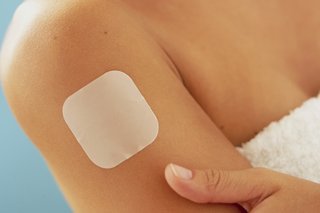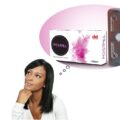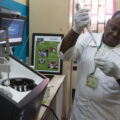A. Mirena B. Ortho Evra C. NuvaRing. D. Depo-Provera. B. Ortho Evra.
The correct answer to the question above is option B. Ortho Evra
This patch contains combination hormone medication and is used to prevent pregnancy. It contains 2 hormones: a progestin (norelgestromin) and an estrogen (ethinyl estradiol). It works mainly by preventing the release of an egg (ovulation) during your menstrual cycle. It also makes vaginal fluid thicker to help prevent sperm from reaching an egg (fertilization) and changes the lining of the uterus (womb) to prevent attachment of a fertilized egg. If a fertilized egg does not attach to the uterus, it passes out of the body.
The transdermal contraceptive patch is a safe and convenient birth control method that works really well if you always use it correctly. You wear the patch on certain parts of your body, and it releases hormones through your skin that prevent pregnancy. The patch has lots of other health benefits too.
How does the birth control patch work?
The birth control patch prevents pregnancy by stopping sperm from joining with an egg (which is called fertilization). Like most birth control pills, the patch has the hormones estrogen and progestin — these are similar to the hormones our bodies make naturally. The hormones in the patch stop ovulation. No ovulation means there’s no egg hanging around for sperm to fertilize, so pregnancy can’t happen. The patch’s hormones also thicken the mucus on your cervix. This thicker cervical mucus blocks sperm so it can’t swim to an egg — kind of like a sticky security guard.
How do I make the patch work best for me?
To get the patch’s full birth control powers, you have to use it correctly. Making a mistake like forgetting to refill your prescription or not putting on a new patch on time is the main reason why people might get pregnant when they’re using the patch.
Here are some tips to help you remember when it’s time to put on a new patch and avoid patch mistakes:
- Use Spot On, your birth control reminder app or set a weekly alarm on your phone.
- Note your patch change days on your calendar.
- Be patch buddies with friends or family members who also use the patch, and help each other remember.
- Your partner can help remind you.
- Keep your replacement patches in the same place so you don’t lose them.
- Store your patches at room temperature, and away from direct sunlight. Don’t store them in the refrigerator or freezer. Keep each patch sealed in its pouch until right before you put it on.
- Check your patch once a day to make sure it’s still sticking to your skin correctly.
- Don’t put your patch in a place where it can be rubbed by tight clothes (like the waistband of pants or underwear).
- If you’re using Twirla, avoid being in water for more than 30 minutes at a time.
Bottom line: do whatever works for you to make sure you use your patch correctly all the time.
Want to be extra super-duper sure you don’t accidentally get pregnant? You can use a condom with the patch every time you have penis-in-vagina sex. That way you’ll be protected from STDs too.
Does the patch protect against STDs?
Nope, the patch is really good at preventing pregnancy, but it won’t protect you from sexually transmitted infections. Using condoms every time you have sex really lowers your chances of getting or spreading STDs. Condoms also protect against pregnancy, so using condoms and the patch together gives you awesome pregnancy-preventing power. SEE: How To Spot Fake Birth Control






